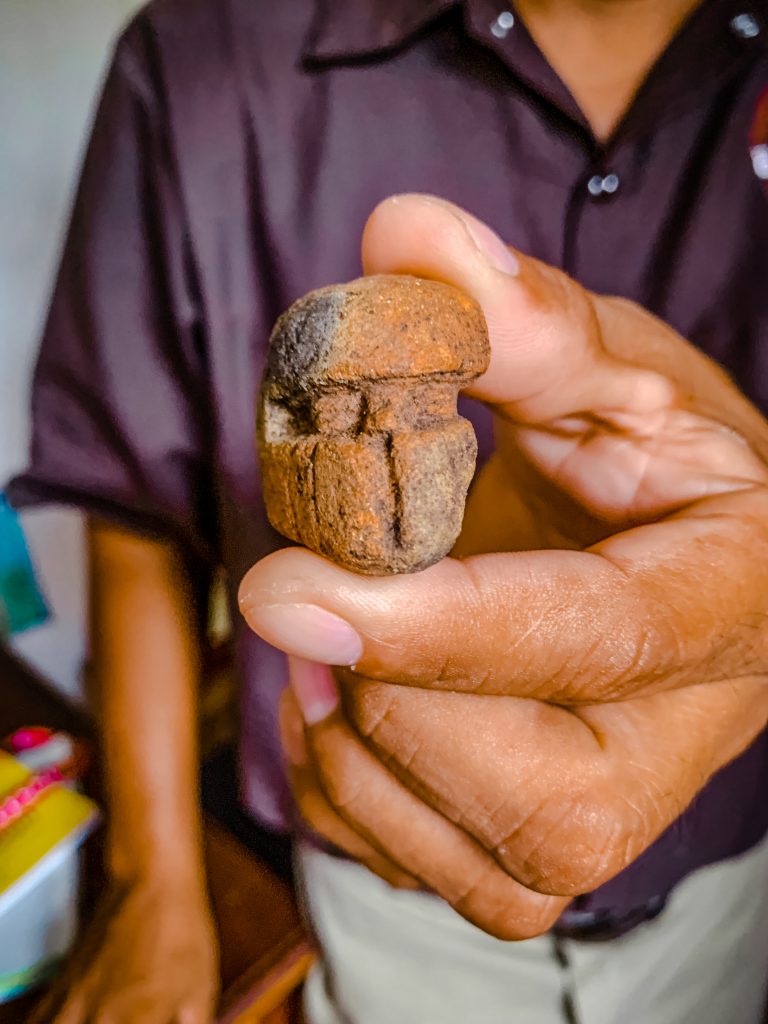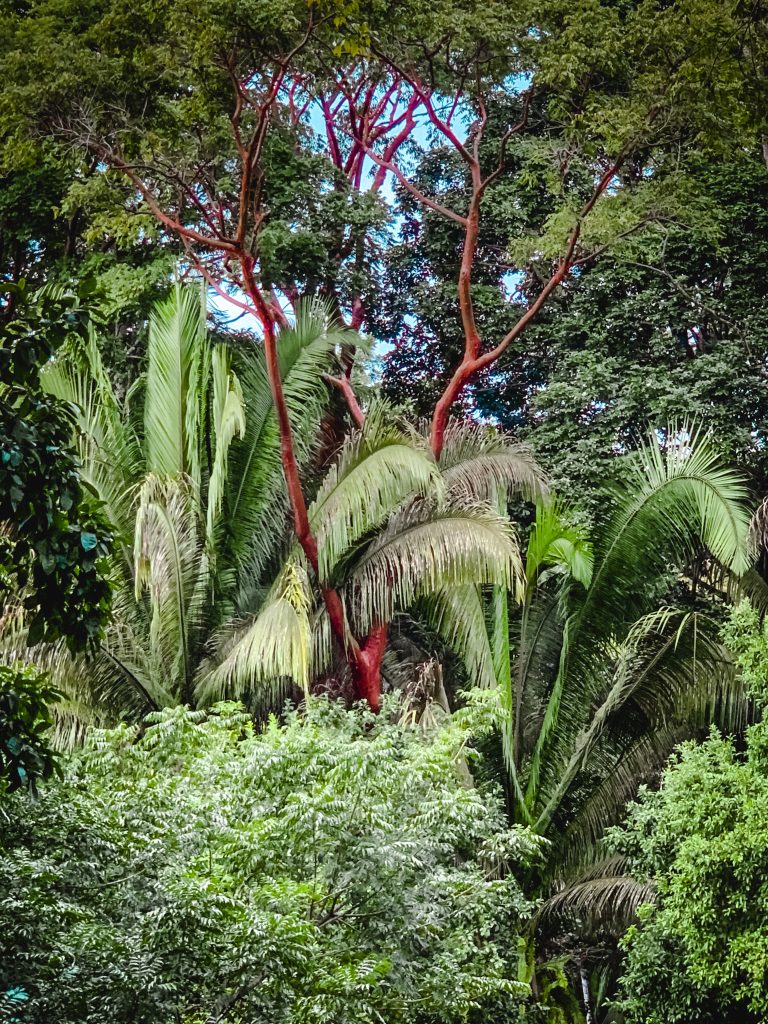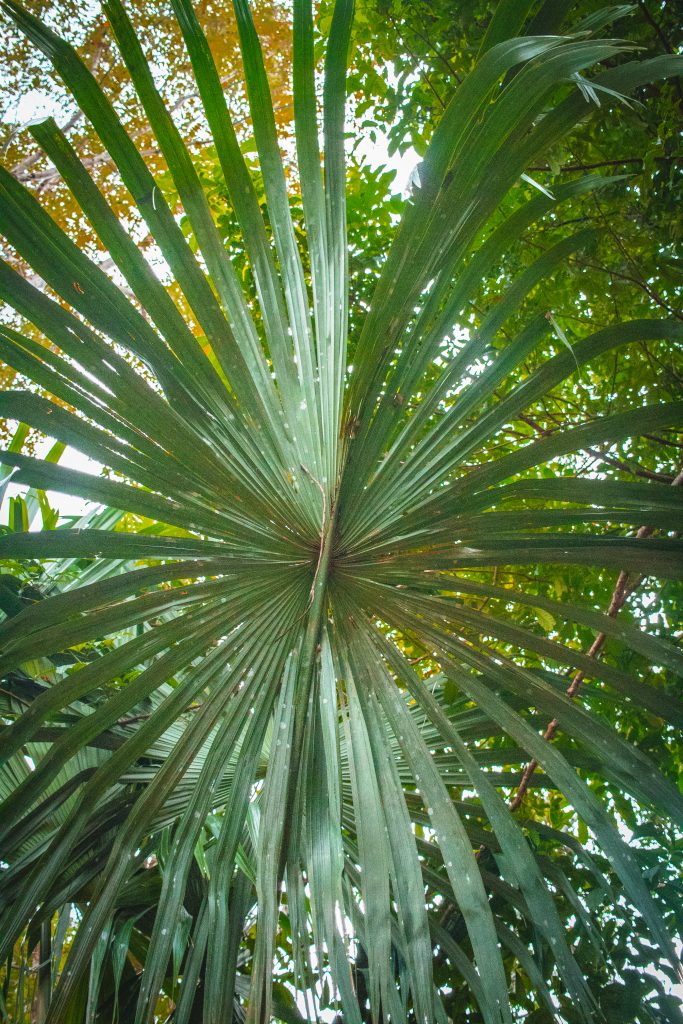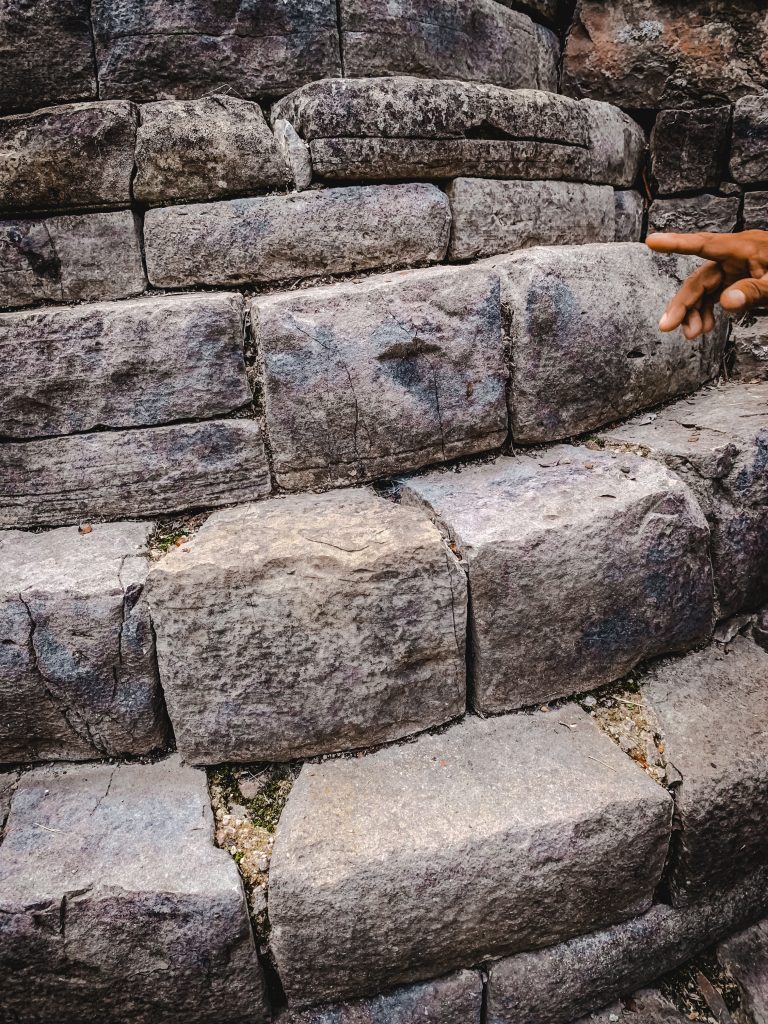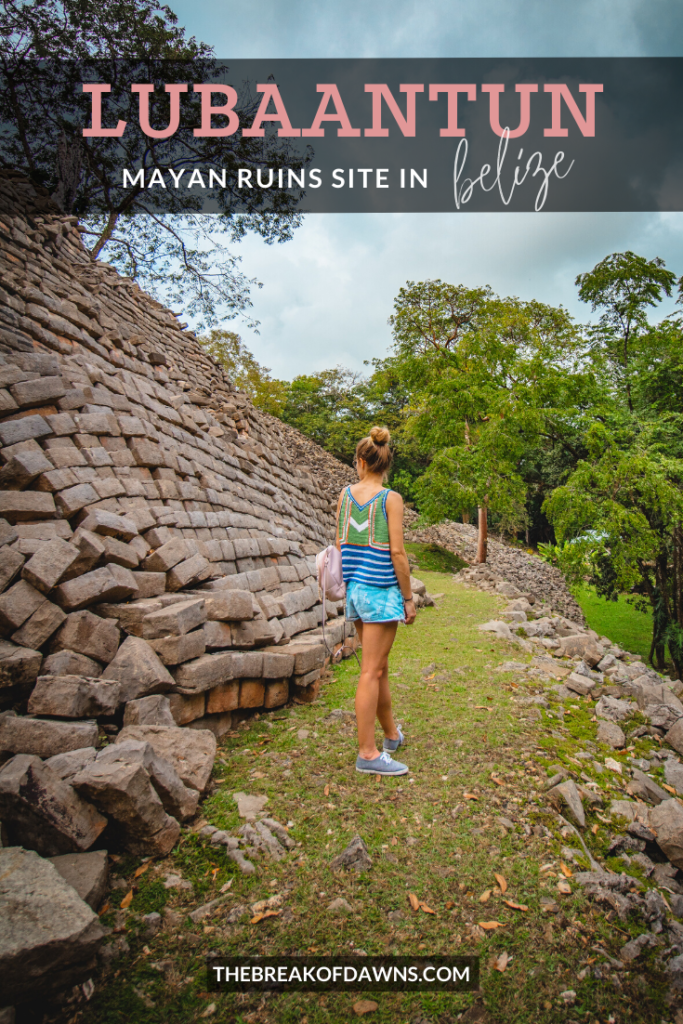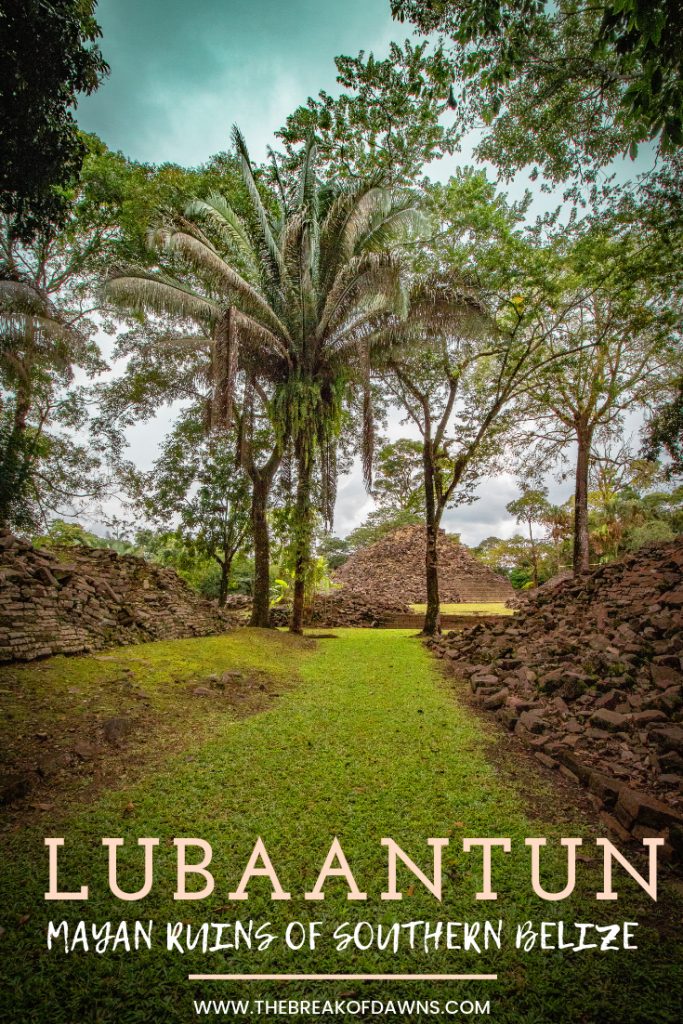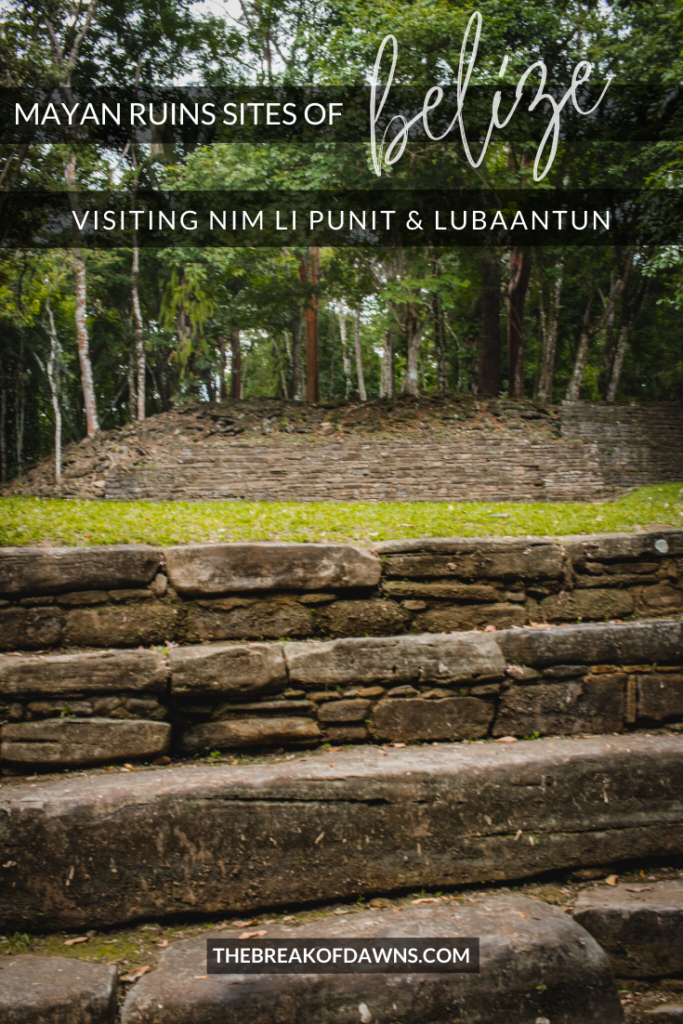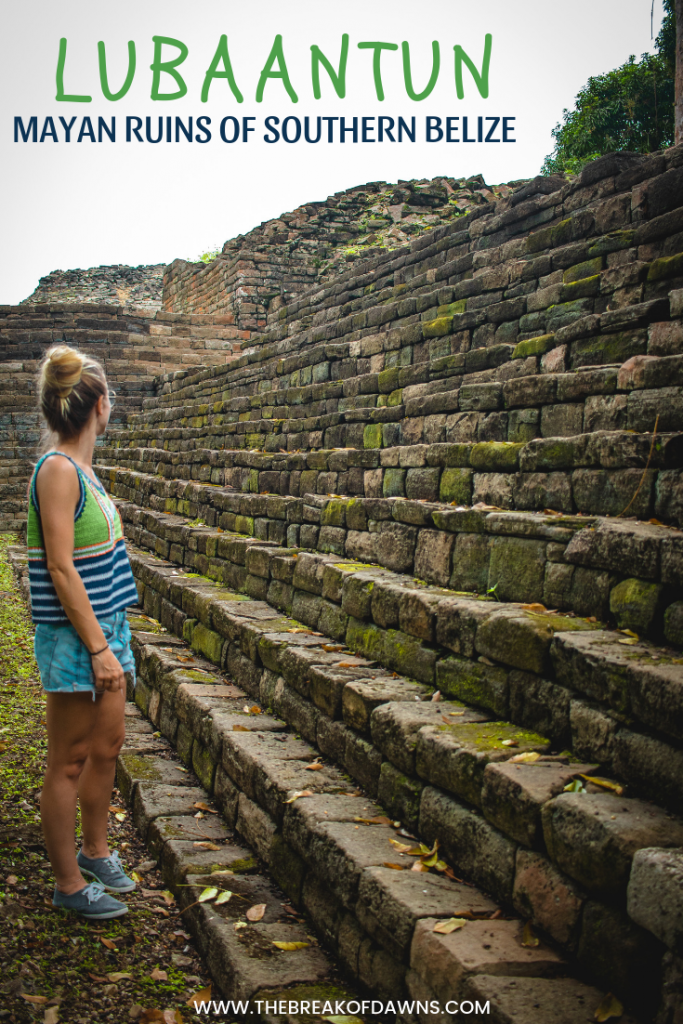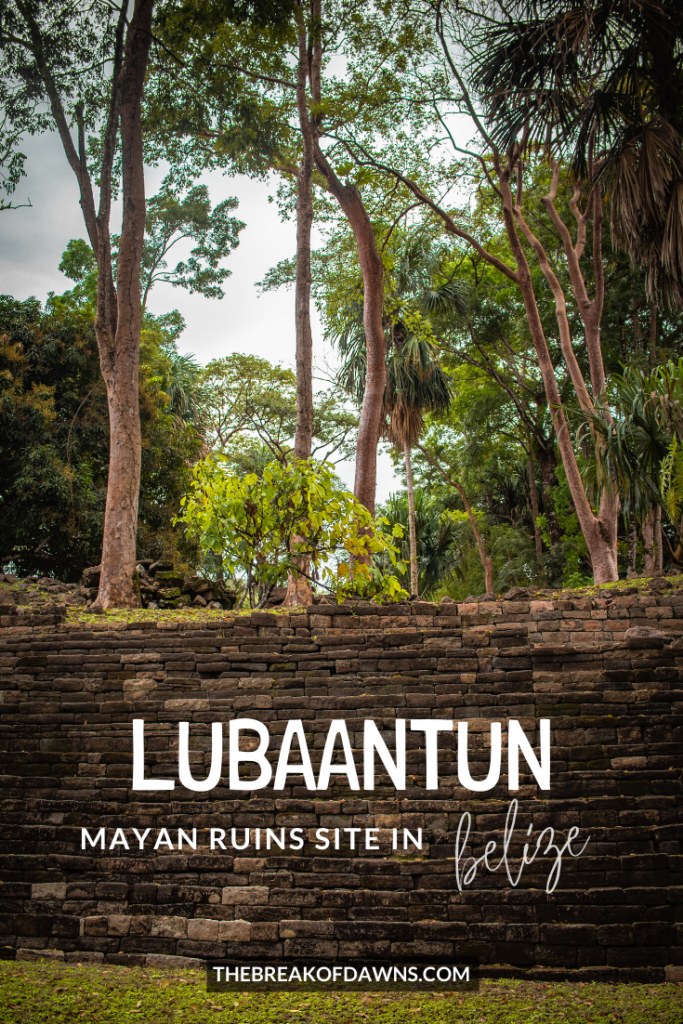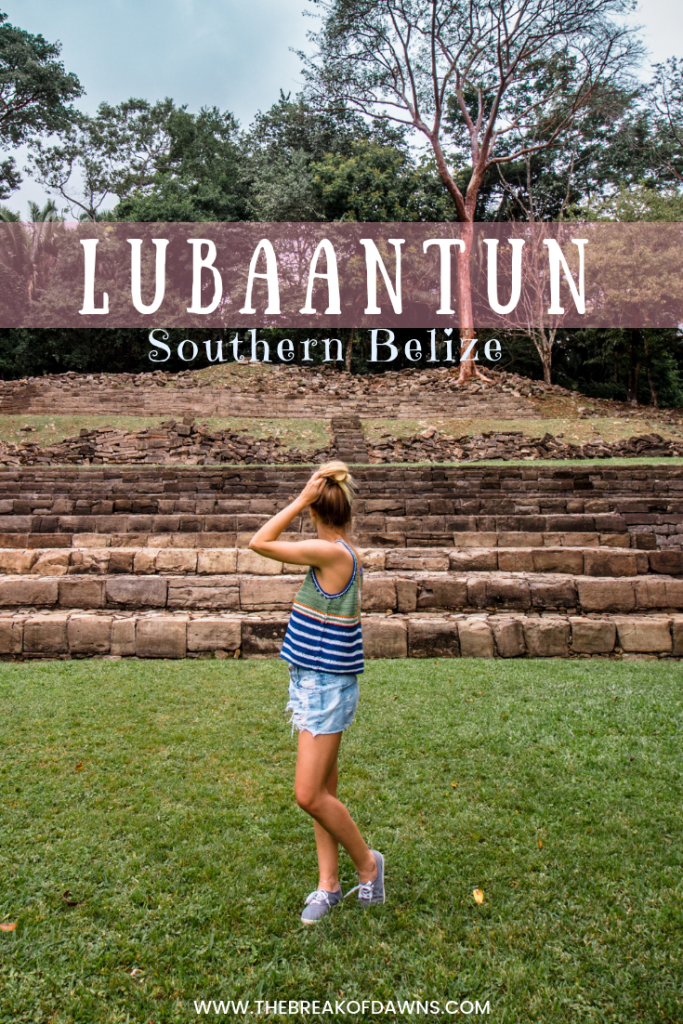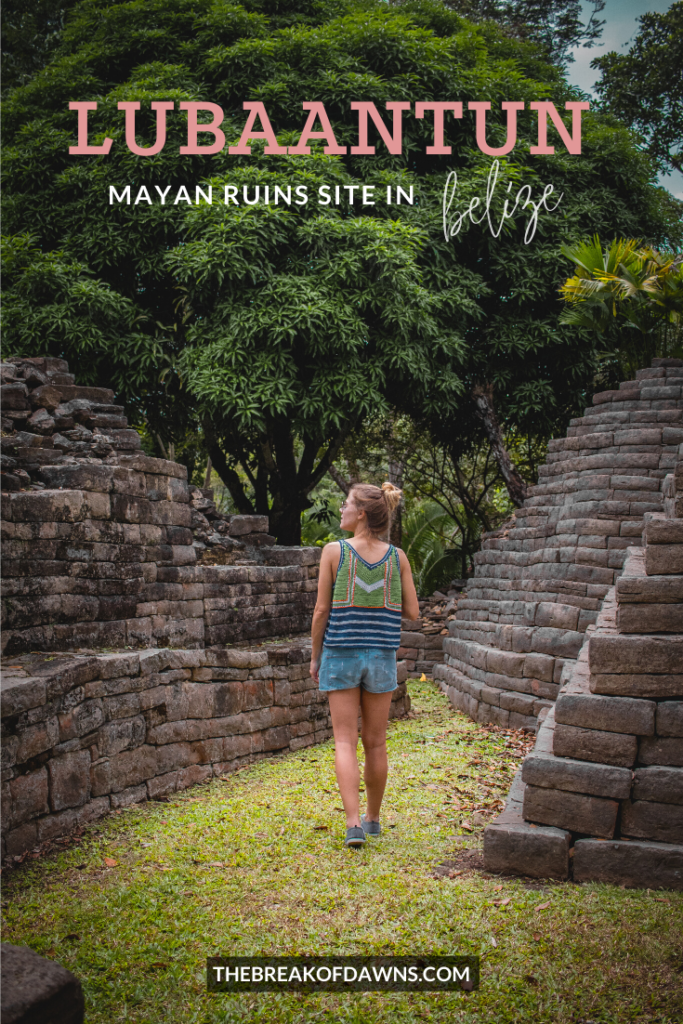
The Lubaantun Mayan Ruins is a place of perpetuous mystery. While the site is nearly 2000 years old, 80% of the entire area still needs uncovered.
After visiting Nim Li Punit, I drove about 25 minutes over to Lubaantun where I talk for nearly 4 hours with the only worker there. His name is Shol and he’s a direct descendant of the Mayans who constructed Lubaantun.
Here’s Lubaantun: Mayan Ruins of Southern Belize:
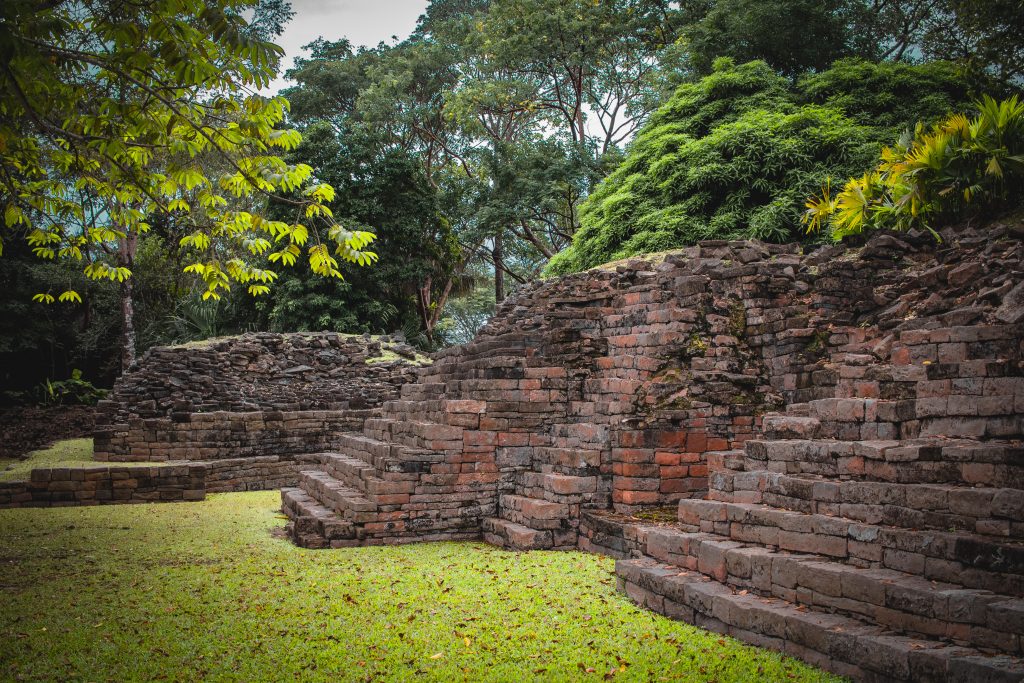
Getting to Lubaantun
Lubaantun is located in the Toledo district of Southern Belize, just a few miles off the Southern Highway.
Read More: The Toledo District of Southern Belize: Where, What & Why You Should Visit
Lubaantun is only 15 miles from Nim Li Punit so visiting both in one trip is very easy to do. You can read more about my experience at Nim Li Punit here.
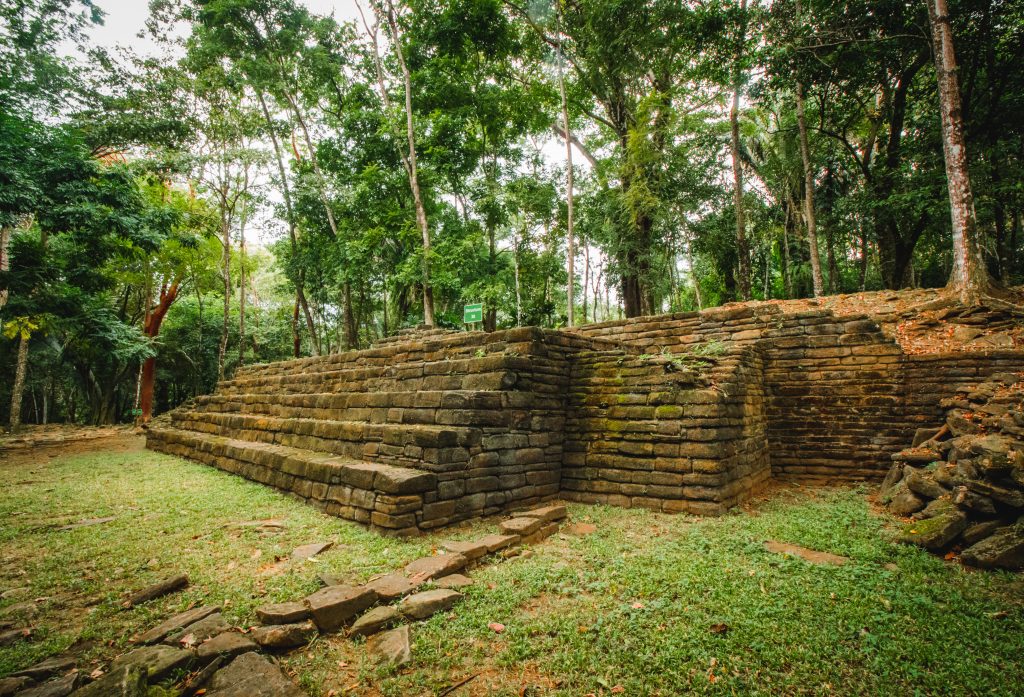
The eco-adventure resort, Cotton Tree Lodge, hosted me for a couple of days in Belize and they provide excursions to the Mayan sites. Most other hotels or tour companies will offer day trips or you can arrange that through a private tour company. Since we rented a car, we were able to make the trip ourselves, driving about 40 minutes from the Cotton Tree Lodge.
Read More: Renting a Car in Belize: Costs + Tips
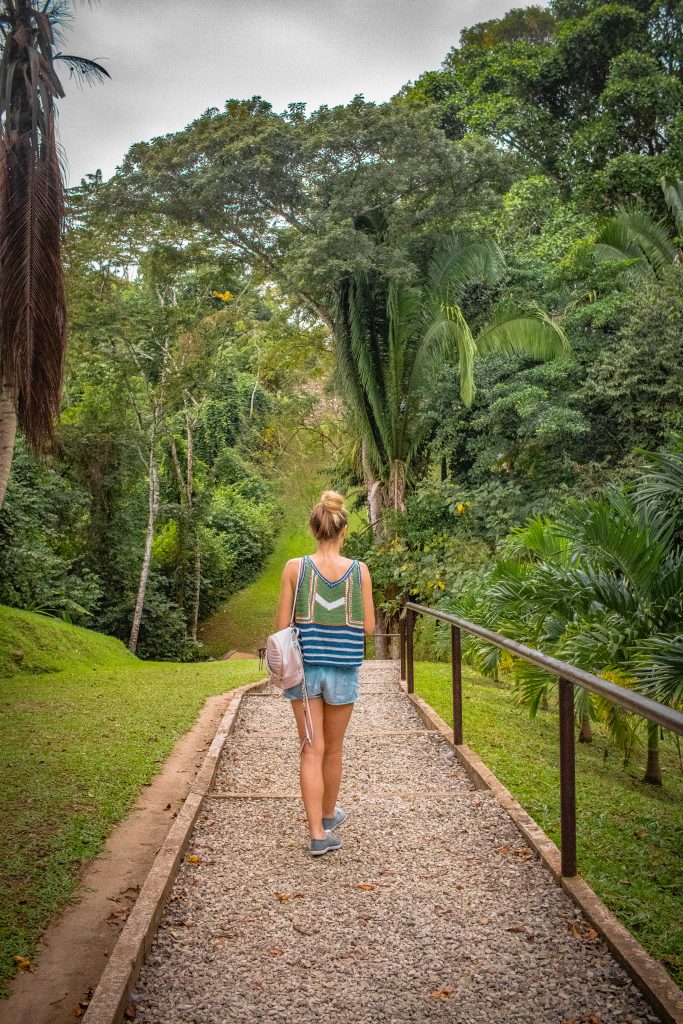
Admission to Lubaantun
The price to enter Lubaantun is fairly reasonable at $10 BZE ($5 USD). Coming up the long pathway, the visitor’s center is on the right side where you can pay the fee desk in the office.
Don’t be so quick to get exploring! Spend some time talking with Shol, who works every day except Saturday. He’s a direct descendant of the Mayans, the developers of this site nearly 2000 years ago. Listening to his stories, culture, history and theories was one of the highlights of our entire Belize vacation.
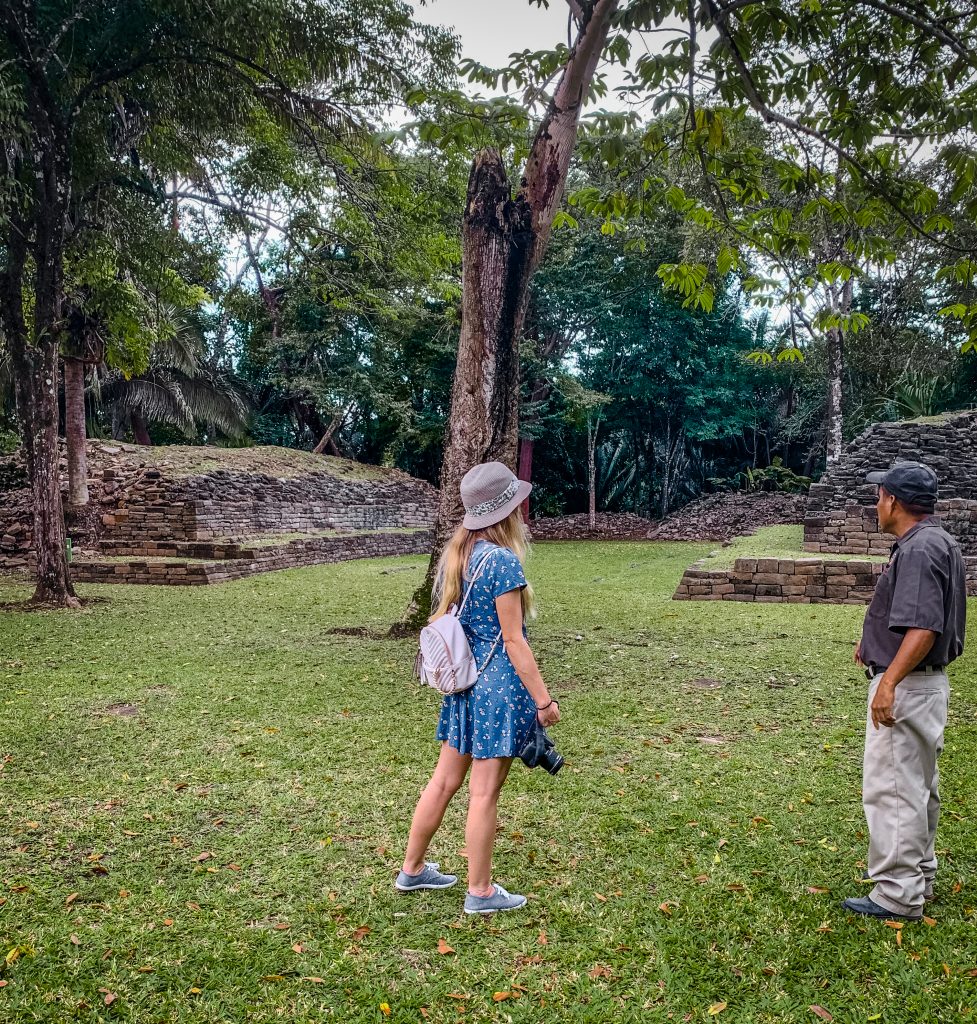
All in all, we spend nearly 4 hours talking and exploring Lubaantun with Shol. Along with chopping up a rubber tree with his machete, he digs into the ground to find root for a snack. He tells us about important history of Lubaantun, things we wouldn’t have otherwise known. One of those important facts was how the rounded corner stones here lack mortar, a progressive masonry for ancient times.
Shol describes the various plants that Mayans still use today for cooking. We learn about the medicinal uses and crafting and were shown iconic miniature ceramic objects found on site here at Lubaantun. These small carvings are thought to be charm stones or ritual ornaments (especially those that resemble an alien). The most common found are the mass-produced whistle-figurines capable of playing three different notes.
Historical Significance of Lubaantun
Lubaantun, the largest Mayan site in southern Belize, is known for its extremely unique style of construction. The structures are built of massive black slate stone blocks rather than the typical limestone of that era. Laid so precisely, no mortar was necessary for construction.
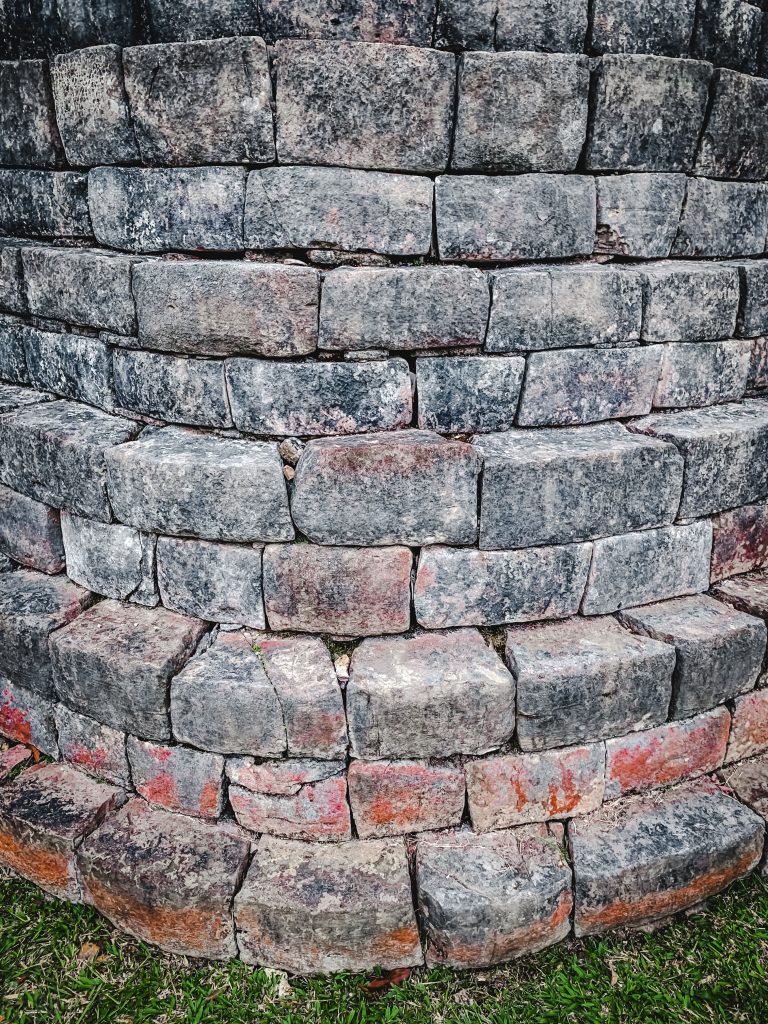
The Masonry
Instead of having doors, the inside-out building of the pyramids allows easy access. They maintain perfectly-shaped corner tiers for steps to the top of the structure. Lubaantun was built on top of an artificially raised platform between two rivers. Shol tells us that the Mayans essentially chopped off the top of this mountain to build their city. With such an in-depth masonry, strenuous manual labor would have been required to build this site. This suggests that Lubaantun was of very high importance.
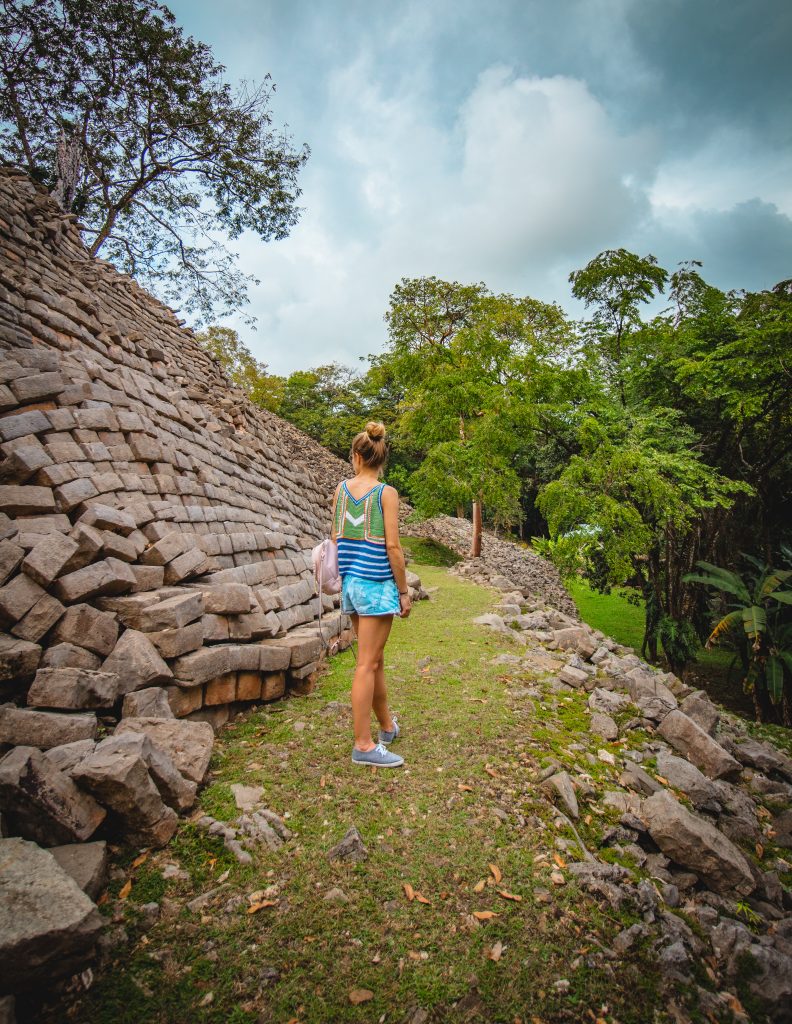
Having a strategic location, Lubaantun is assumed to be of importance for military defense. It most likely acted as an administrative, religious, political and commercial center. With a central location, the inhabitants could access natural ecological resources and trade networks easily. As archaeologists uncovered ceramic and stone effigies holding pods, they determined this was a main producer for cacao. This suggests that Lubaantun was the local capital for this area of Central America.
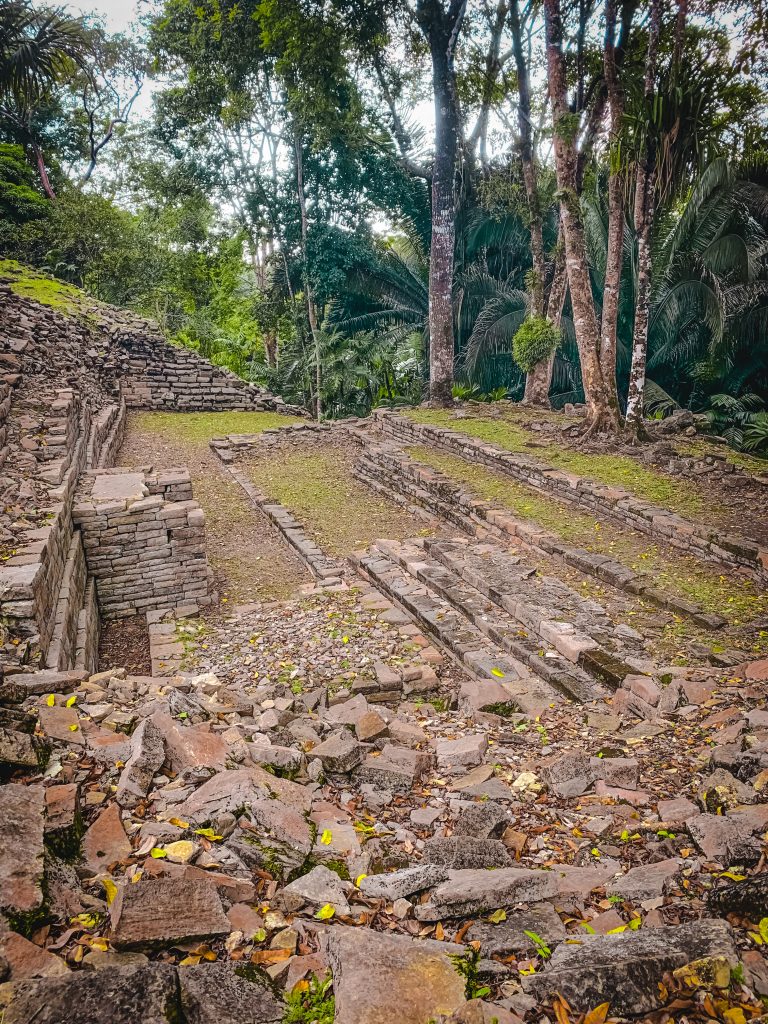
While the ancient name of Lubaantun is unknown, the term currently translates to the “place of fallen stones”. Multiple factors cause confusion to narrow down a date as to when Lubaantun was constructed. Four different classes of masonry was used, the massive terrace has Peruvian characteristics and the traditional Mayan stone carvings, like the stelae found at Nim Li Punit, are completely absent.
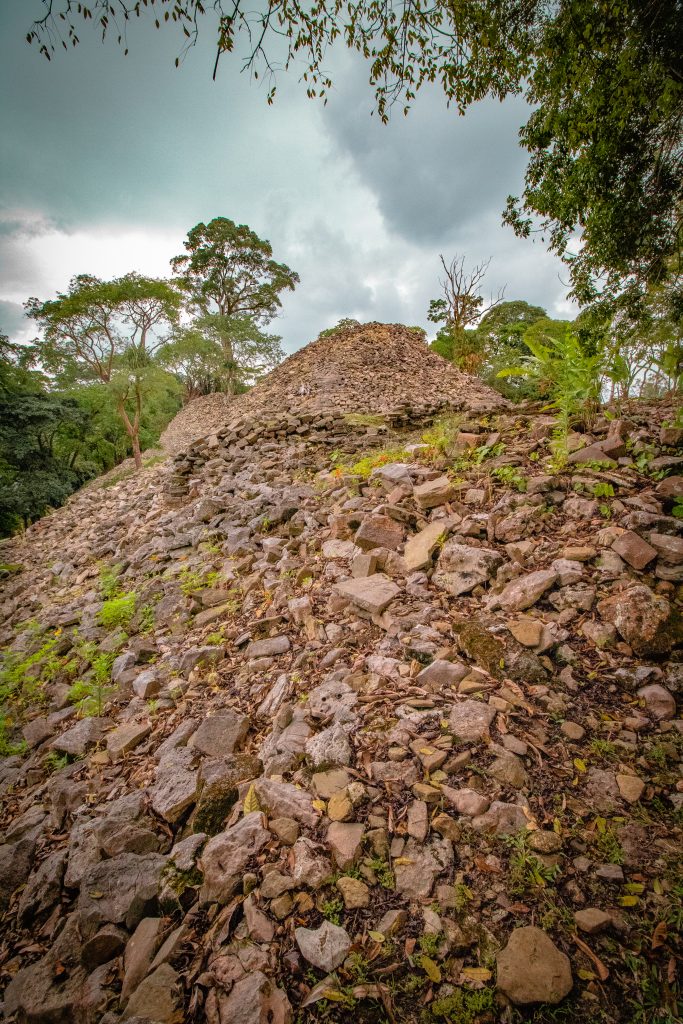
With the help of uncovering other Mayan sites throughout Central America, historians estimate Lubaantun’s age and population. Since it appears to be from the Maya Classic era, it’s thought to have flourished from 730-890 AD. The population was around 1200 people per square mile.
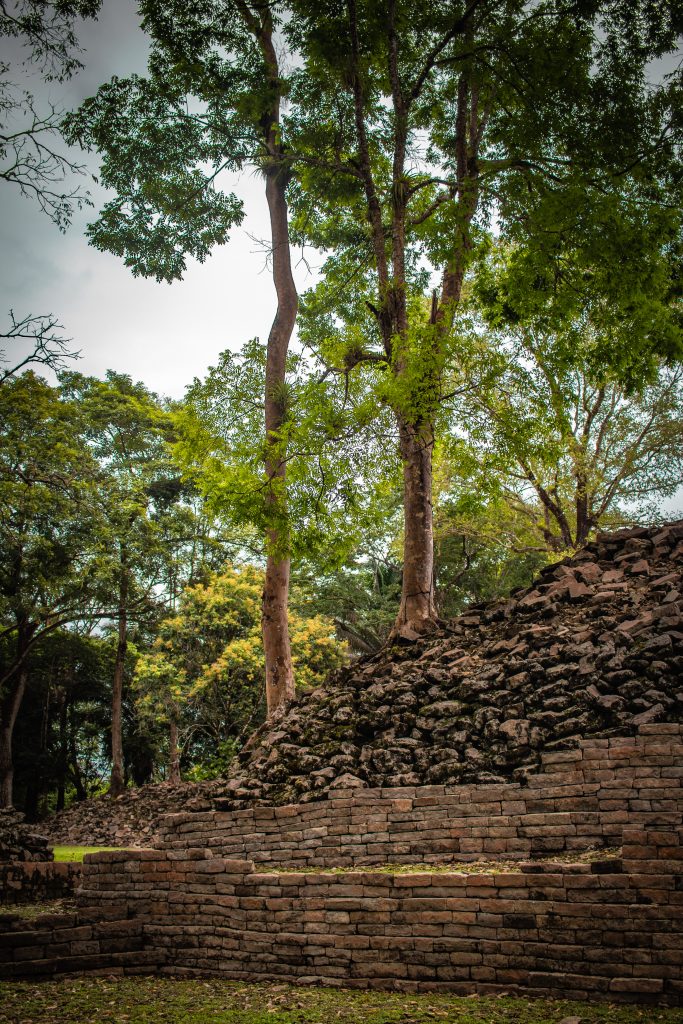
Exploring the Grounds
After leaving the visitor’s center, we walk up the floral-covered stone steps. These are actually the real steps along one of the walls of Lubaantun, recently restored by Schol himself.
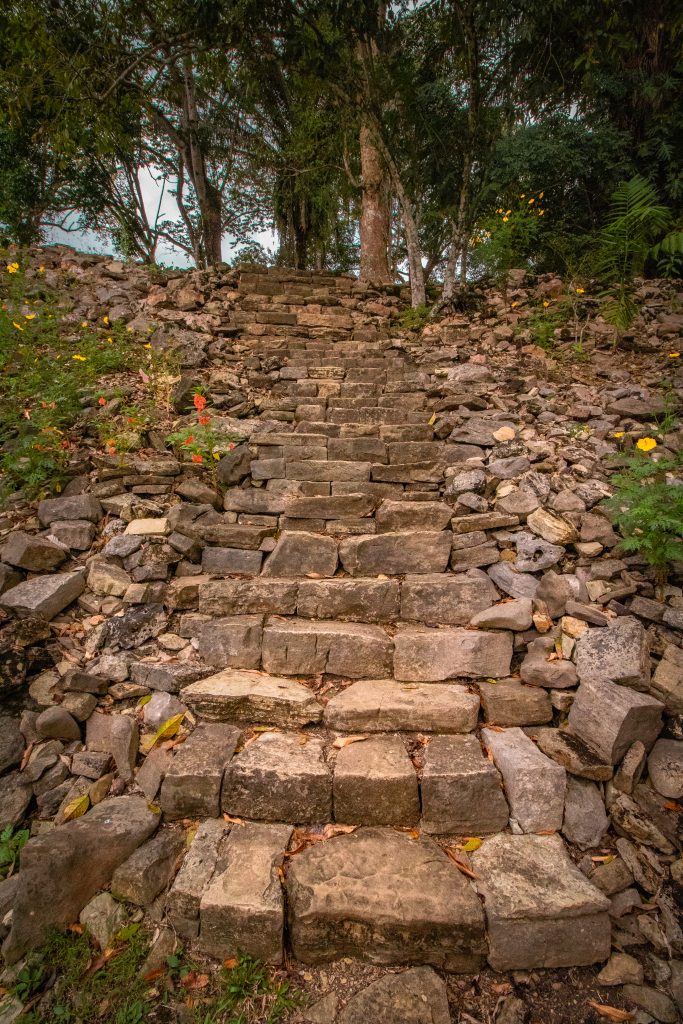
East Group
Upon reaching the top, two different routes appear. We go right first to see the east group, containing the first of 3 ball courts.
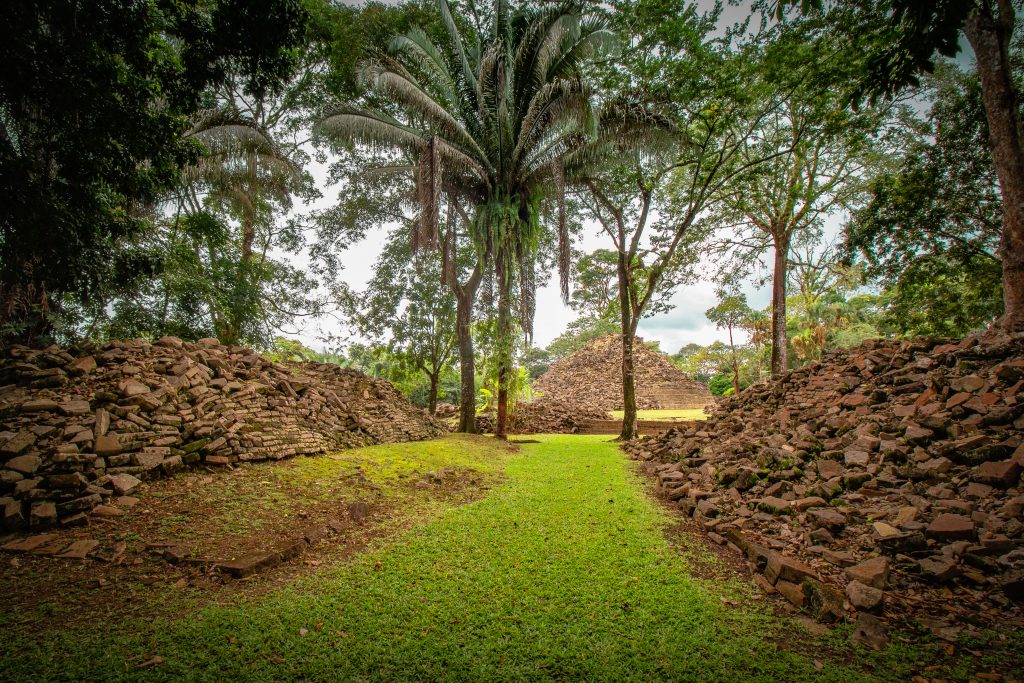
We then wind ourselves around to the Great Plaza. According to Shol, this area is so large it suggests a market existed where peasant farmers could sell their goods, along with the inhabitants of Lubaantun. This is the first location of the site where the iconic rounded-masonry is found.
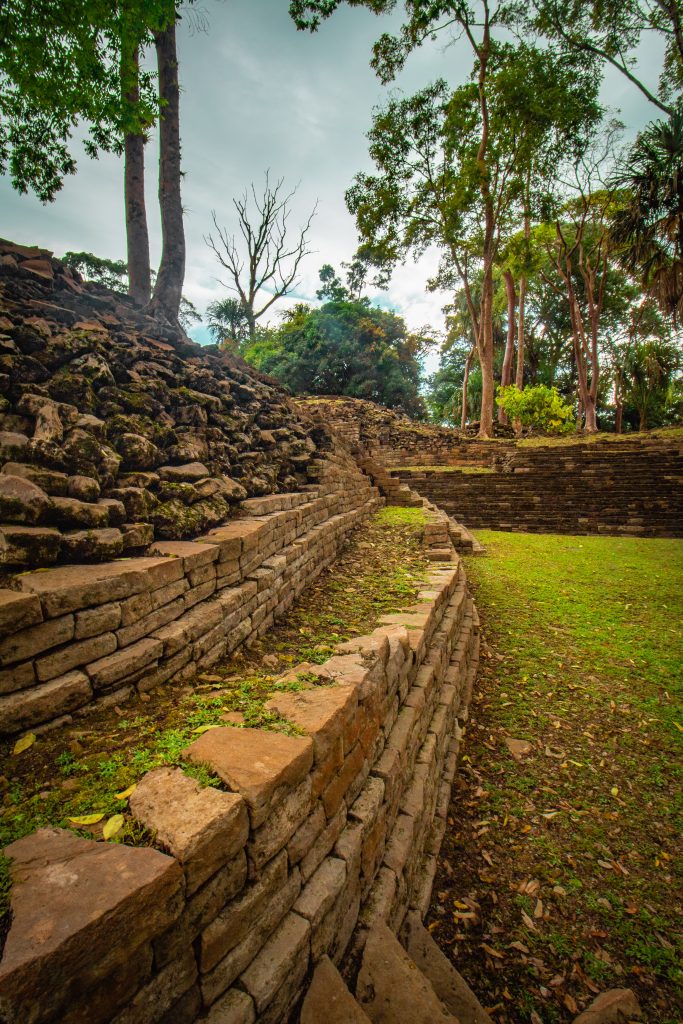
I ask Shol if there was grass here during those times and he says that all of the ground in Lubaantun were hand-poured plaster. That flooring has since disintegrated. Can you imagine pouring plaster over this large of an area?!
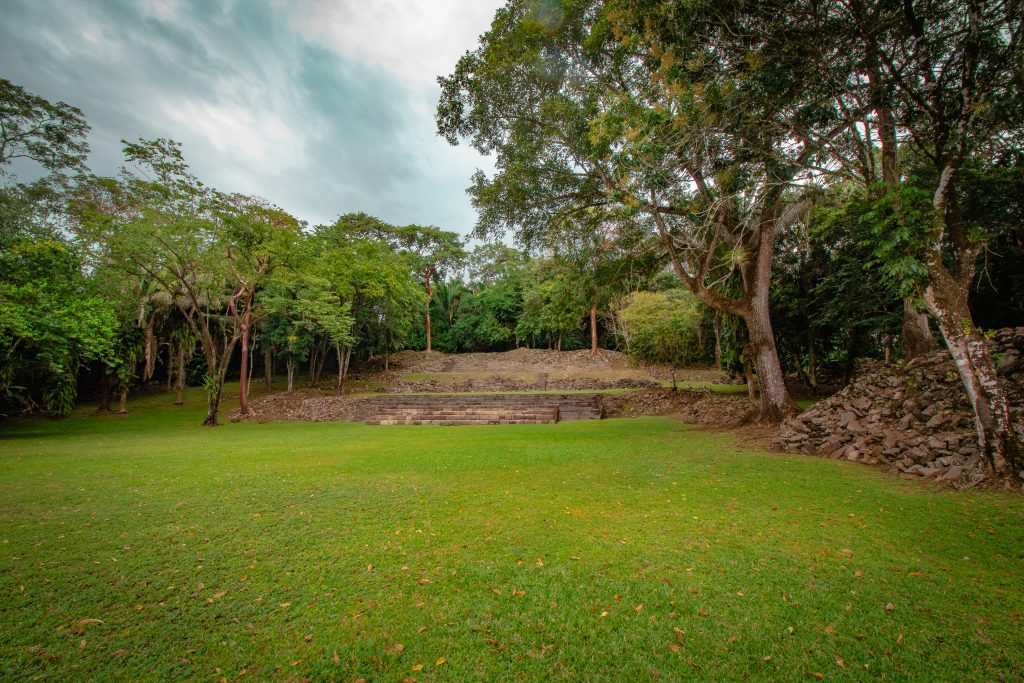
West Group
The West Ballcourt, the second of 3 here at Lubaantun, is the next stop on the walking tour. More pathways narrowly lead through rounded-slate structures, naturally falling from the tree roots and vines.
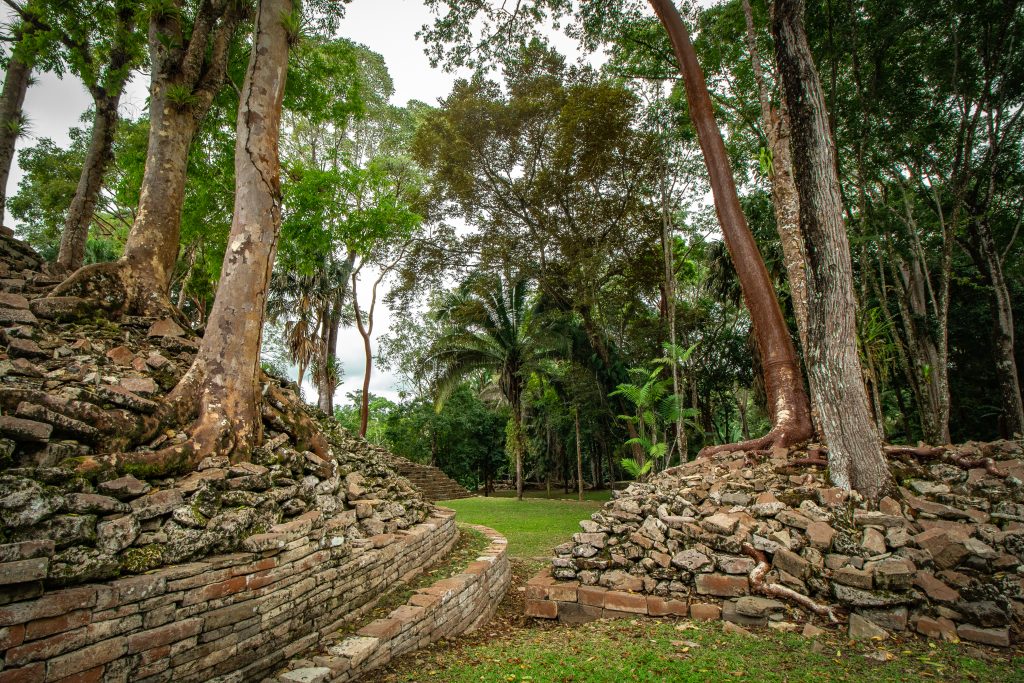
On the most western side of Lubaantun below elevation of the site is the Butterfly Plaza. Along with food and water storage containers, archaeologists found various stone structures that once supported a domestic house, the first found at Lubaantun. The location is centralized to the city, suggesting inhabitants were elite members of the community.
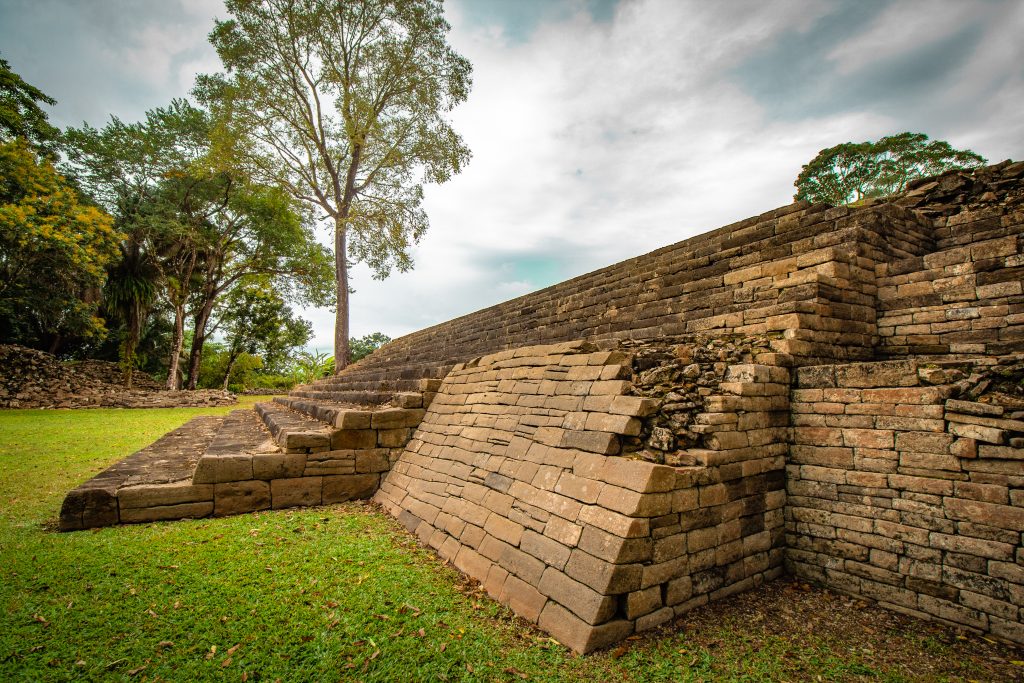
The Rituals Area
Upon leaving the Butterfly Plaza and heading back east, a prominent area of Lubaantun can be seen. An area for rituals or human sacrifices, a large platform with steps leading up on all four sides lies central to the grandstands.
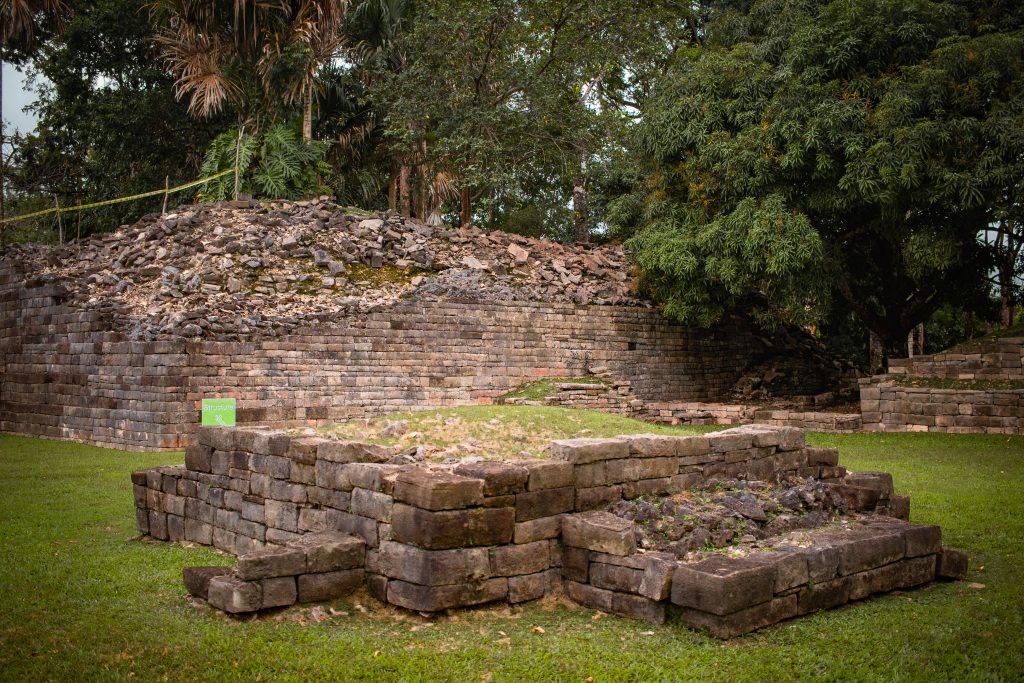
This area is also prominent for being the location for the finding of the controversial Crystal Skull. If you’re unfamiliar with the story, the adopted daughter of the original excavator of Lubaantun put forth claims of finding this Crystal Skull. However, many odd features force historians to draw different conclusions. They assume it was actually purchased in the U.K. and brought to Lubaantun.
Some Mayans believe that the Crystal Skull is one of 13 located around the globe. Once they’re all brought together, it will prevent the end of the world.
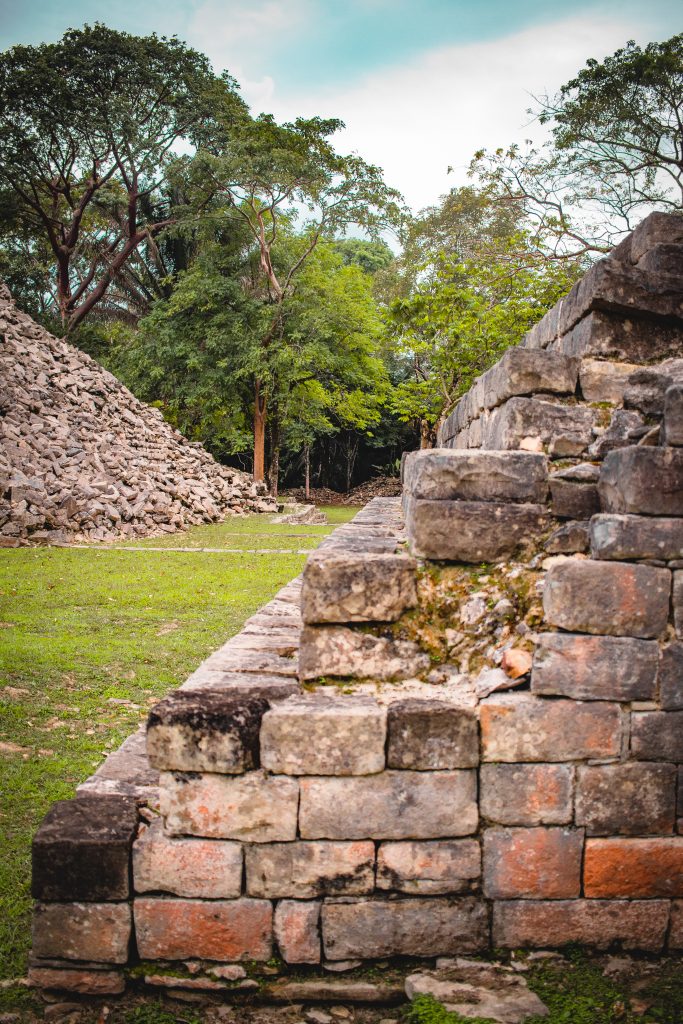
Shol doesn’t believe the Crystal Skull came from Lubaantun. It’s so intricately cut, resembling that of a human skull, it must have been affected by a laser. Historians conclude the carving is against the grain yet it’s void of cracks. Using water and sand, the crystal was created in a process taking more than 300 years to complete. No other Crystal Skull of its kind has ever been found in the Mayan world.
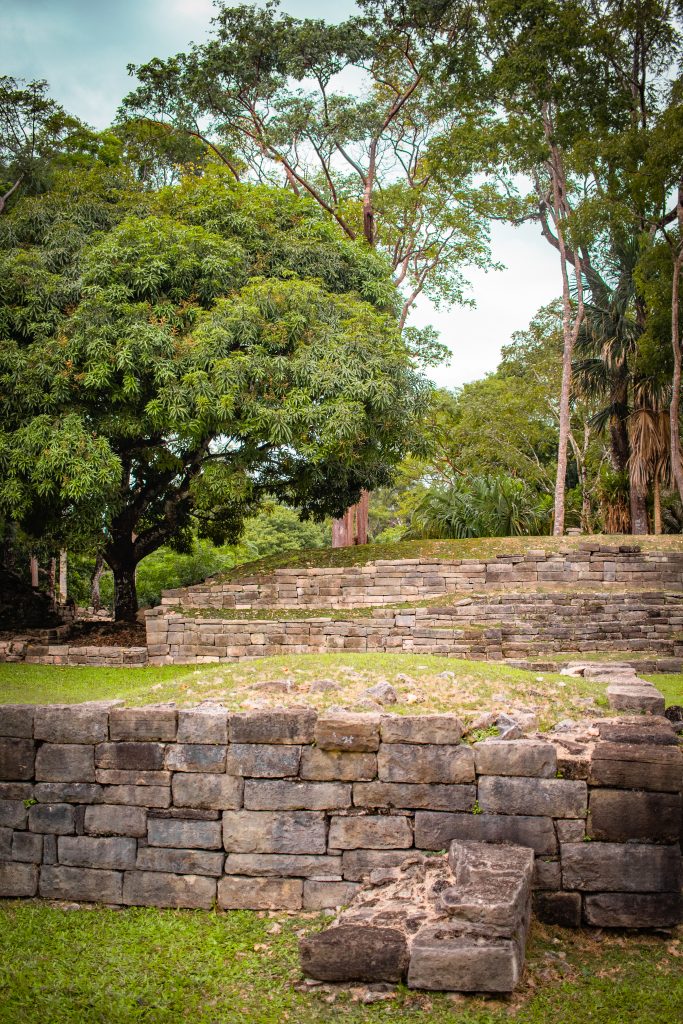
Central Plazas
Just past the ritual area is the Plaza of the Sacred Altar which is where skeletal remains were found in the 1970s. The remains were in bad shape due to water damage but tooth preservation was good. These teeth showed that malnutrition played a role in the inhabitants’ lifetime. Lubaantun is only 1 of 26 sites out of 115 where multiple burials occurred.
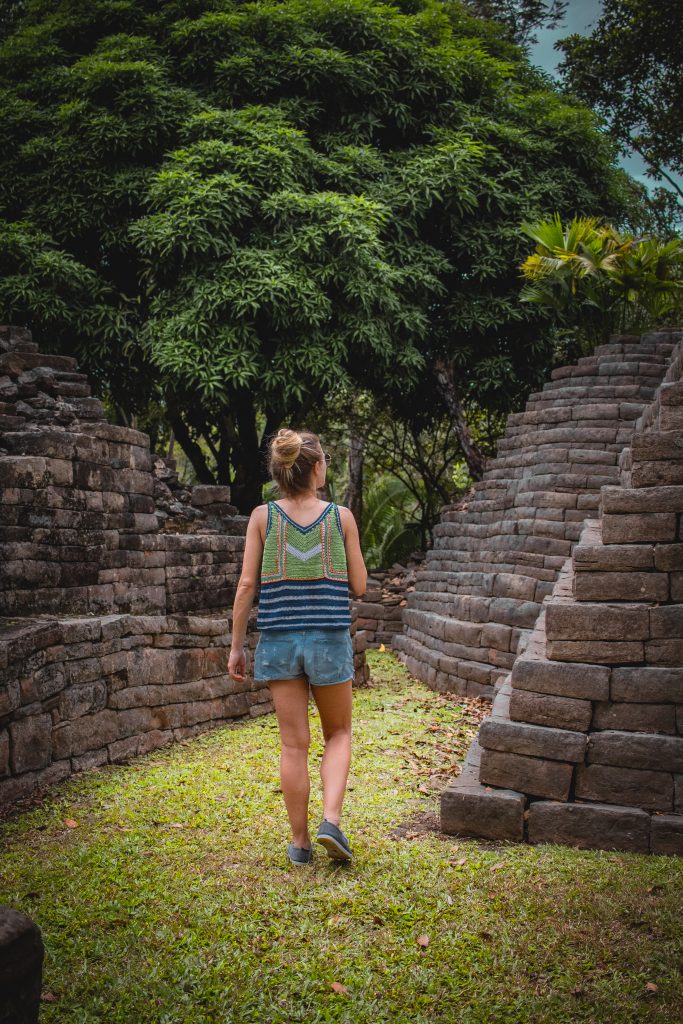
Perpendicular to the Plaza of the Sacred Altar is the Grand Ballcourt, the largest of the 3 found here at Lubaantun. Interestingly enough, no other ruins site throughout the Mayan world has 3 ballcourts. This proves that Lubaantun had quite a bit of significance in this region.
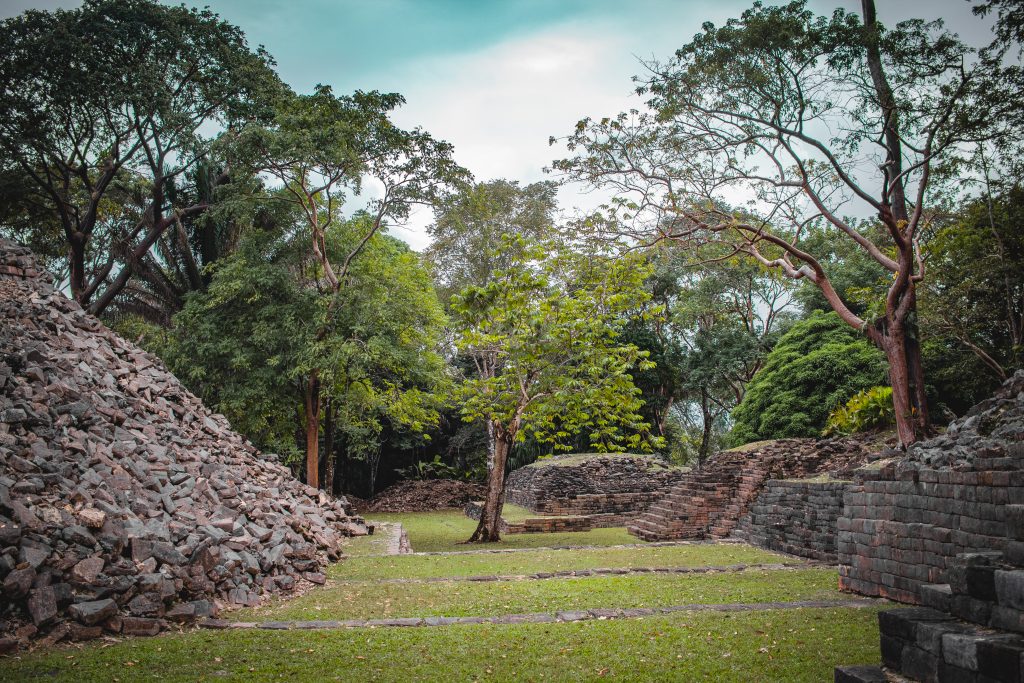
Before wrapping around to the grand finale of Lubaantun, we walk over to check out the building remnants among the jungle atmosphere. According to Shol, Lubaantun actually had multiple other structures spread throughout the miles leading in from the centralized area.
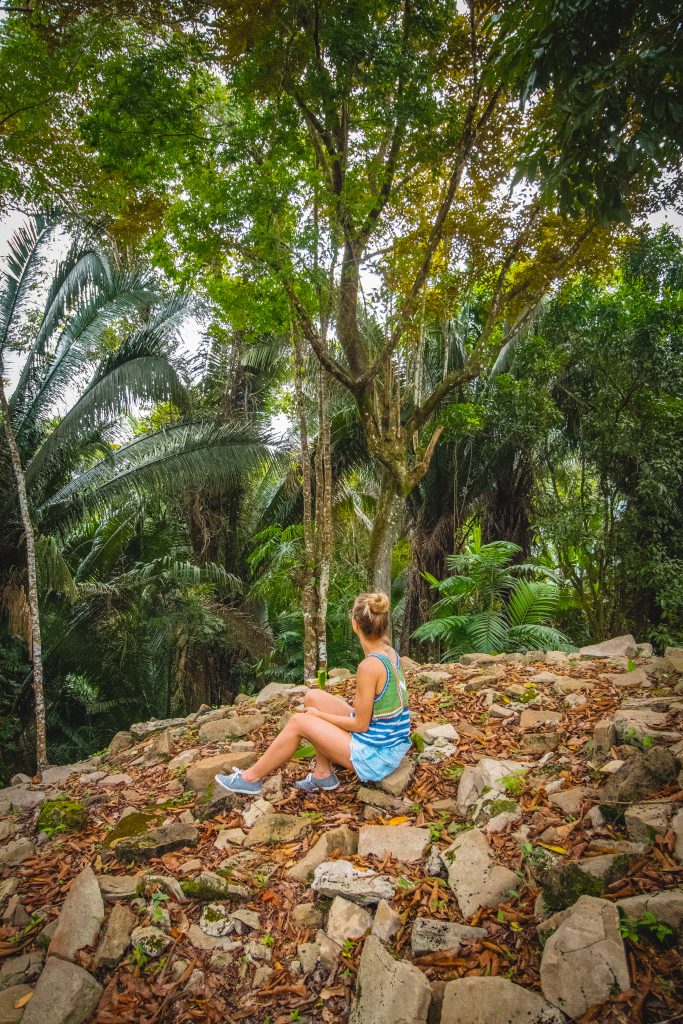
We round back up towards the visitor’s center, passing by the most iconic structures of Lubaantun. The two 40 foot pyramids appear partially concaved, with the exception of the tallest still maintaining its shape.
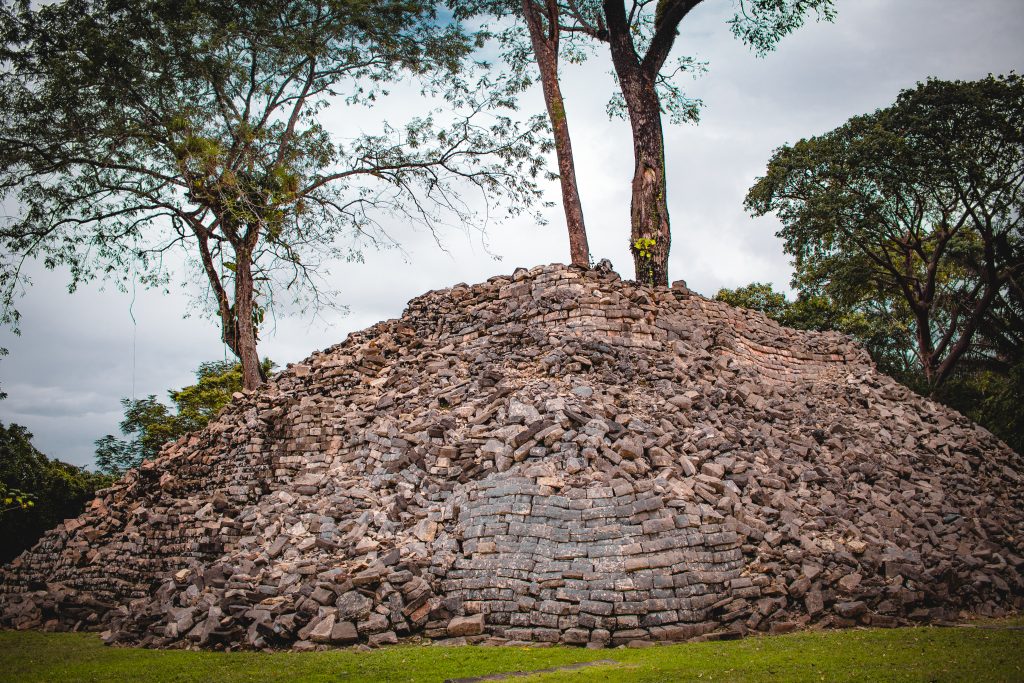
Local Mayan descendants from the nearby village of San Pedro Columbia destroyed the second pyramid. In the 1950s, they came to the site with their crowbars and separated the stones to take back to the village. Constructing a school, community center and a church, they caused much damage to the second pyramid but created a beautiful church in the process.
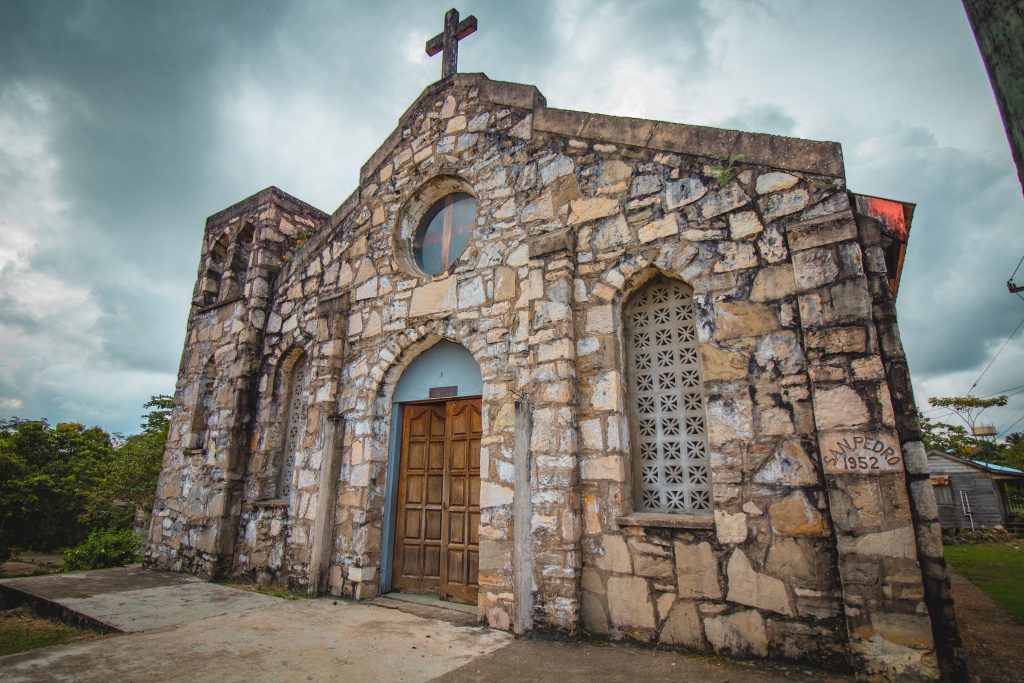
Like This Post? Pin It!
| This post contains affiliate links which means that, at no extra cost to you, if you purchase one of these products I may receive a small commission. This helps me maintain my blog as a free space to you. Check out my Disclaimer for more info.
Shop the Post
